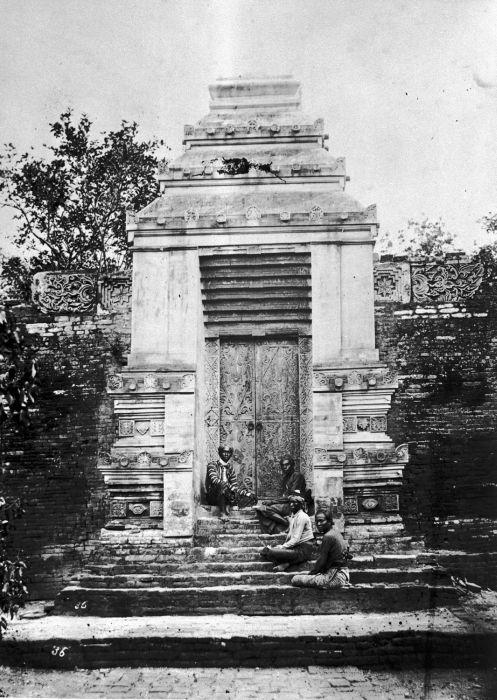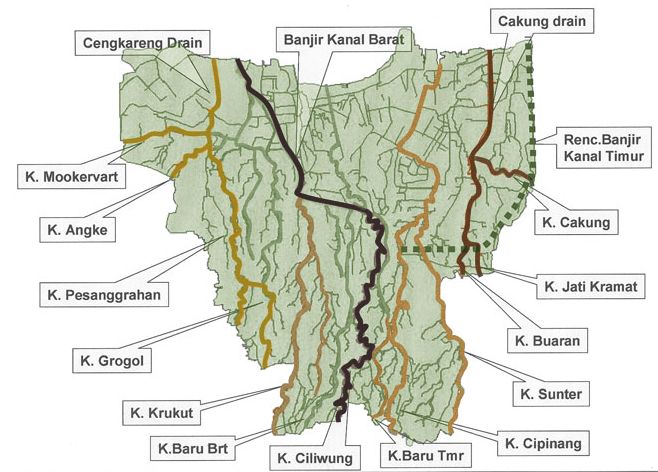|
Pakuan Pajajaran
Pakuan Pajajaran (or ᮕᮊᮥᮝᮔ᮪ᮕᮏᮏᮛᮔ᮪/ Dayeuh Pakuan/Pakwan or Pajajaran) was the fortified capital city of Sunda Kingdom. The location is roughly corresponds to modern Bogor city in West Java, Indonesia, approximately around the site of Batu Tulis. The site is revered as the spiritual home of Sundanese people as it contains much of shared identity and history of Sundanese people. The city was settled since at least the 10th century, but not gaining major political importance until Sri Baduga Maharaja established it as the royal capital of Sunda kingdom in the 15th century. In 1513, the city was visited by its first European visitor, Tomé Pires, the Portuguese envoy. According to his report, the city of ''Daio'' (''Dayeuh'' is a Sundanese term for "capital city") was great city, with population around 50,000 inhabitants. After the reign of King Jayadewata (Sri Baduga Maharaja), Pakuan Pajajaran served as the royal capital for several generations. ''Dayeuh'' P ... [...More Info...] [...Related Items...] OR: [Wikipedia] [Google] [Baidu] |
Sunda Kingdom
The Sunda Kingdom ( su, , Karajaan Sunda, ) was a Sundanese Hindu kingdom located in the western portion of the island of Java from 669 to around 1579, covering the area of present-day Banten, Jakarta, West Java, and the western part of Central Java. The capital of the Sunda Kingdom moved several times during its history, shifting between the Galuh (Kawali) area in the east and Pakuan Pajajaran in the west. The Sunda Kingdom reached its peak during the reign of King Sri Baduga Maharaja, whose reign from 1482 to 1521 is traditionally remembered as an age of peace and prosperity among Sundanese people. According to primary historical records such as the Bujangga Manik manuscript, the eastern border of the kingdom was the Pamali River (Ci Pamali, the present-day Brebes River) and the Serayu River (Ci Sarayu) in Central Java. Most accounts of the Sunda Kingdom come from primary historical records from the 16th century. The kingdom's inhabitants were primarily the eponymous ethni ... [...More Info...] [...Related Items...] OR: [Wikipedia] [Google] [Baidu] |
Shiva
Shiva (; sa, शिव, lit=The Auspicious One, Śiva ), also known as Mahadeva (; ɐɦaːd̪eːʋɐ, or Hara, is one of the principal deities of Hinduism. He is the Supreme Being in Shaivism, one of the major traditions within Hinduism. Shiva is known as "The Destroyer" within the Trimurti, the Hindu trinity which also includes Brahma and Vishnu. In the Shaivite tradition, Shiva is the Supreme Lord who creates, protects and transforms the universe. In the goddess-oriented Shakta tradition, the Supreme Goddess ( Devi) is regarded as the energy and creative power (Shakti) and the equal complementary partner of Shiva. Shiva is one of the five equivalent deities in Panchayatana puja of the Smarta tradition of Hinduism. Shiva has many aspects, benevolent as well as fearsome. In benevolent aspects, he is depicted as an omniscient Yogi who lives an ascetic life on Mount Kailash as well as a householder with his wife Parvati and his three children, Ganesha, Kartikeya and A ... [...More Info...] [...Related Items...] OR: [Wikipedia] [Google] [Baidu] |
Mataram Sultanate
The Sultanate of Mataram () was the last major independent Javanese kingdom on the island of Java before it was colonised by the Dutch. It was the dominant political force radiating from the interior of Central Java from the late 16th century until the beginning of the 18th century. Mataram reached its peak of power during the reign of Sultan Agung Anyokrokusumo (), and began to decline after his death in 1645. By the mid-18th century, Mataram lost both power and territory to the Dutch East India Company (Dutch: ''Vereenigde Oost-Indische Compagnie''; ''VOC''). It had become a vassal state of the company by 1749. Etymology The name ''Mataram'' itself was never the official name of any polity, as the Javanese often refer to their realm simply as ''Bhumi Jawa'' or ''Tanah Jawi'' ("Land of Java"). ''Mataram'' refers to the historical areas of plains south of Mount Merapi around present-day Muntilan, Sleman, Yogyakarta, and Prambanan. More precisely, it refers to the Kota Gede ... [...More Info...] [...Related Items...] OR: [Wikipedia] [Google] [Baidu] |
Babad
Javanese literature has a very large historical component. In all sorts of texts, such as laudatory poems, chronicles, and travelogues, writers have interpreted the how and why of certain circumstances. These texts are important for the knowledge of Javanese perspectives on the past. Scholars of Javanese history have paid much attention to theoretical questions, aiming at a balanced evaluation of Javanese historiography next to Western historiography. In doing so they focused on Old and Modern Javanese sources, drawing both on written sources and archaeological and epigraphic material. The debate continues up to the present. Babads ''Babads'' as a genre belong to the traditional literature. A characteristic of this kind of literature is that it is written in metrical form and is governed by a set of strict conventions. In traditional Javanese society, prose (''gancaran'') was not considered to be ''belles letters'' but was considered to be merely sets of notes or ''aide-mémoi ... [...More Info...] [...Related Items...] OR: [Wikipedia] [Google] [Baidu] |
Suma Oriental
Suma may refer to: Places * Suma, Azerbaijan, a village * Suma, East Azerbaijan, a village in Iran * Sowmaeh, Ardabil, also known as Şūmā, a village in Iran * Suma-ku, Kobe, one of nine wards of Kobe City in Japan ** Suma Station, a railway station in the ward * Suma Municipality, Yucatán, Mexico * Suma (ward), an administrative ward in Rungwe District, Mbeya Region, Tanzania * Suma River, Mbeya Region, Tanzania People Ethnic groups * Suma people, an indigenous people of Mexico and the United States * The Suma, a subgroup of the African Gbaya people Given name * Suma Kanakala (born 1975), Indian television presenter * Suma Shirur (born 1974), Indian sport shooter Nickname * Suma Chakrabarti (born 1959), British civil servant * Peter Sumich (born 1968), Australian rules footballer Surname * Andrea Suma (13??–14??), Albanian prelate of the Roman Catholic Church * Jak Mark Suma (), Albanian diplomat * Kanita Suma (born 2001), Albanian singer * Kei Suma ... [...More Info...] [...Related Items...] OR: [Wikipedia] [Google] [Baidu] |
Carita Parahyangan
Carita Parahyangan ( en, Tale of Parahyangan, official Sundanese script: ) is a text contained in a single manuscript written around the late 16th century, registered as Kropak 406 from the former collection of the Bataviaasch Genootschap voor Kunsten en Wetenschappen (Batavian Society of Arts and Sciences), now in the ''Perpustakaan National'' (National Library) in Jakarta. It was identified as early as 1882 by Holle as the "Carita Parahyangan", the name derived from Parahyangan highlands in West Java, originated from Sundanese words which means "the abode of hyangs (gods)". Since that time the manuscript has received much scholarly attention. The Carita Parahyangan tells the history of Sunda Kingdom, from the early Galuh period in the early 8th century, during the era of Wretikandayun and King Sanjaya, until the fall of Pakuan Pajajaran in the 16th century, the capital of Sunda kingdom under invasion by the Banten Sultanate assisted by the Cirebon and Demak Sultanates. The manus ... [...More Info...] [...Related Items...] OR: [Wikipedia] [Google] [Baidu] |
Bujangga Manik
Bujangga Manik is one of the precious remnants of Old Sundanese literature. It is told in octosyllabic lines — the metrical form of Old Sundanese narrative poetry — in palm-leaf manuscript kept in the Bodleian Library of Oxford University in England, since 1627 or 1629 (MS Jav. b. 3 (R), cf. Noorduyn 1968:469, Ricklefs/Voorhoeve 1977: 181). Bujangga Manik altogether consists of 29 palm leaves, each containing approximately some 56 lines of 8 syllables. The final part of the text has been transmitted in a lacunary form. Not only is the end lacking, there are two other lacunae. The first break occurs after leaf 26, line 1476. Main character The hero of the literature is Prabu (English: Prince) Jaya Pakuan alias Bujangga Manik, a Sundanese Hindu rishi, who, though a prince at the court of Pakuan Pajajaran (capital city of Sunda kingdom, which was located near present-day Bogor city in western part of Java island), preferred to live a life of a man of religion. As a hermit he ma ... [...More Info...] [...Related Items...] OR: [Wikipedia] [Google] [Baidu] |
Inscription
Epigraphy () is the study of inscriptions, or epigraphs, as writing; it is the science of identifying graphemes, clarifying their meanings, classifying their uses according to dates and cultural contexts, and drawing conclusions about the writing and the writers. Specifically excluded from epigraphy are the historical significance of an epigraph as a document and the artistic value of a literary composition. A person using the methods of epigraphy is called an ''epigrapher'' or ''epigraphist''. For example, the Behistun inscription is an official document of the Achaemenid Empire engraved on native rock at a location in Iran. Epigraphists are responsible for reconstructing, translating, and dating the trilingual inscription and finding any relevant circumstances. It is the work of historians, however, to determine and interpret the events recorded by the inscription as document. Often, epigraphy and history are competences practised by the same person. Epigraphy is a primar ... [...More Info...] [...Related Items...] OR: [Wikipedia] [Google] [Baidu] |
Ciliwung
Ci Liwung (often written as Ciliwung; also as Tjiliwoeng in Dutch, Sundanese: ᮎᮤᮜᮤᮝᮥᮀ) is a 119 km long river in the northwestern region of Java where it flows through two provinces, West Java and the special region of Jakarta. The natural estuary of the Ciliwung river, known as the Kali Besar ("Big River"), was an important strategic point for trade in the precolonial and colonial periods and was instrumental in the founding of the port city of Jakarta, but has been lost from reorganization of the watercourse of the rivers around the area into canals. Etymology The etymology of ''Ciliwung'' is uncertain; the two least implausible assumptions are "the whirlpool" (compare Sundanese ''liwung'' "be distressed, upset") or "the meandering one" (compare Malay ''liuk'', ''liut'' "to twist"). It is possible that the name originated from one of the many epithets of the king of Pajajaran Sri Baduga Maharaja, among them is Prabu Haliwung, so named because of his temperamen ... [...More Info...] [...Related Items...] OR: [Wikipedia] [Google] [Baidu] |






